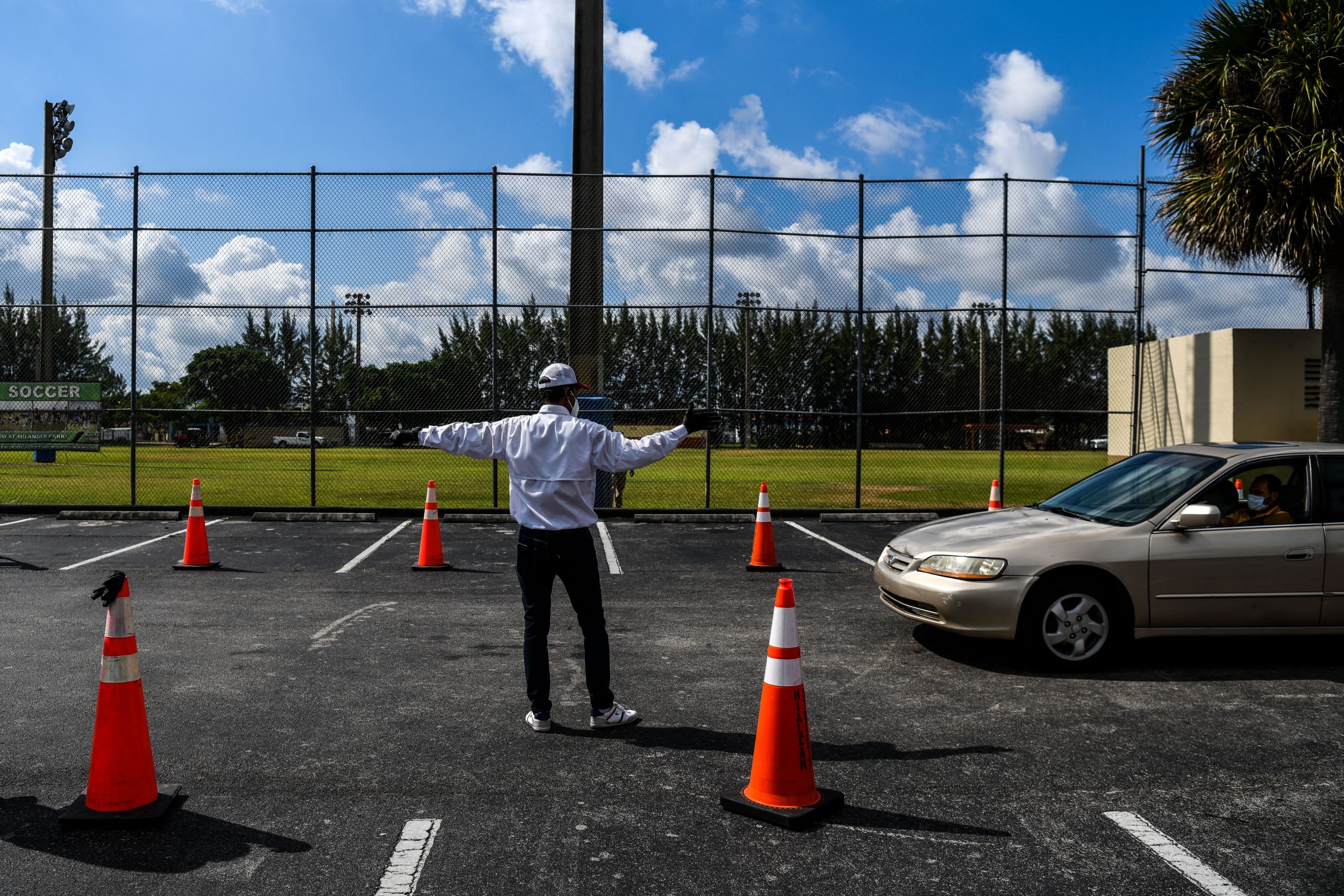People wait in their cars as they line up to collect unemployment forms in Hialeah, Florida.
CHANDAN KHANNA/AFP via Getty Images
The official unemployment rate fell to 8.4% in August as businesses continued emerging from broad shutdowns imposed early in the coronavirus pandemic, the Bureau of Labor Statistics reported Friday.
That’s the lowest rate since unemployment exploded in April, to levels unseen since the Great Depression. It would also mean the official rate dipped below the peak seen during the country’s last downturn, known as the Great Recession.
But the true rate in August is likely much higher than the official figure — perhaps even exceeding 11%, according to labor economists.
The unemployment rate is a measure of joblessness in the country and is a rough barometer of financial hardship.
11.1% unemployment rate
There are a few reasons the true unemployment rate for August is likely higher than the official 8.4%.
For one, there’s been an ongoing data collection issue since early in the pandemic regarding furloughed workers.
The BLS determines the unemployment rate based on a survey of American households. People conducting the survey have sometimes misclassified workers as being employed but absent from work instead of unemployed on temporary layoff, according to the bureau.
Being absent from work — a category that includes people on vacation or on sick leave, for example — doesn’t boost the unemployment rate. A temporary layoff, or furlough, however, does increase it.
The unemployment rate would have been about 0.7 percentage point higher than reported in August — or about 9.1% — if this misclassification error hadn’t occurred, according to the bureau.
The true figure would have been larger still when accounting for people who dropped out of the labor force, economists said.
Such individuals may have been discouraged from looking for work due to the lackluster state of the job market, or may not have been able to look for work because of health concerns or child-care duties, for example.
This is important because the federal government doesn’t count people as being unemployed if they’re not in the labor force. To be counted as in the labor force, people must be available to work and actively looking for a job.
“One of the things many people seem to have missed is, the unemployment rate doesn’t count people who aren’t looking for work,” said Michael Farren, an economist at the Mercatus Center at George Mason University.
There were about 164.5 million people in the labor force in February, before state governments shut down broad sectors of the U.S. economy. That figure fell by about 8 million, to 156.5 million people, in April.
“You didn’t have 8 million people instantly decide, ‘I’m going to retire instead of deal with this pandemic,'” Farren said. “That might have accounted for a small subset of that number, but most of that is people permanently laid off.”
The size of the labor force has since recovered to 160.8 million in August — still about 3.7 million people less than the pre-pandemic figure.
If these people were counted as unemployed, the official unemployment rate would be 11.1%, Farren said.
That analysis is “static,” meaning it doesn’t account for other factors that may have influenced the size of the labor force, like high school graduates now looking for a job. That sort of “dynamic” analysis would likely raise the 11.1% figure a few additional tenths of a percentage point, Farren said.


 Signal2forex.com - Best Forex robots and signals
Signal2forex.com - Best Forex robots and signals




